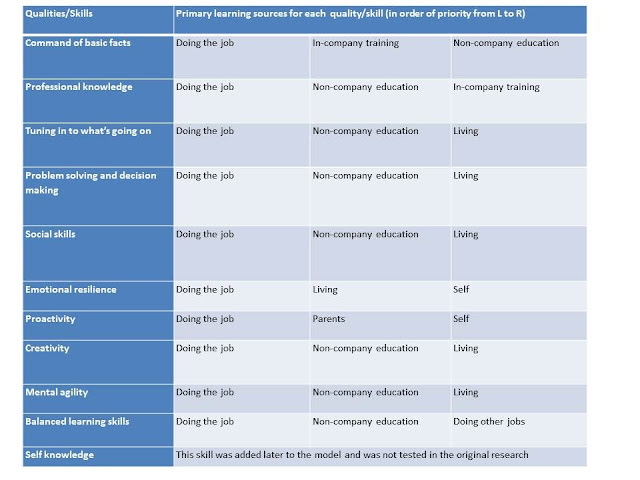Over the past few months I've been commenting on leadership behaviours blog link and the qualities of effective managers blog link. And so I read with interest the piece in the December 2013 edition of HBR 'How Google Sold Its Engineers on Management' by David A. Garvin. (Reprint R1312D)
What's interesting about this piece is not so much the conclusions reached about what Google's best managers do, but the ways in which these were validated by employee research.
Do managers matter?
In an organisation dedicated to being a company built by engineers for engineers, there was an instinctive belief that management might be more destructive than beneficial; a distraction from the real work of problem solving. Indeed, so uncertain were they about the value of managers, they experimented with a completely flat organisation, eliminating engineering managers. The experiment lasted only a few months when too many people were going to the CEO with questions about expense reports, interpersonal conflicts and other nitty-gritty issues. And then there were the contributions that managers made to communicating company strategy and policy, prioritising resources, facilitating career development, etc.
What do good managers do?
Here's the list developed from studying, coding and processing qualitative comments from thousands of employee surveys, performance reviews and submissions for the organisaton's great manager award.
- Is a good coach
- Empowers the team and does not micromanage
- Expresses interest in and concern for team members' success and personal well-being
- Is productive and results-oriented
- Is a good communicator - listens and shares information
- Helps with career development
- Has a clear vision and strategy for the team
- Has key technical skills that help him or her advsie the team
No surprises but the list resonated because it was based on Google data. The behaviours emerged from what was already happening and working, bottom-up. This contrasts starkly with the top-down approach on which I have commented previously.
Things that I noticed...
Small incremental increases in manager quality were quite powerful
Through the application of statistical techniques, the researchers were able to show how even small differences in manager performance against the eight behaviours reduced employee turnover and improved retention as well as greater satisfaction in areas like innovation, work-life balance and career development.
A common language and agenda for improvement
The behaviours served three important functions:
- A shared vocabulary for discussing management. The behaviours primarily describe leaders of small and medium sized teams and are especially relevant to first and second level management.
- Clear guidelines for how to improve it - through use of verbatim examples of best practices from the survey participants
- Encapsulated the full range of management responsibilites; from strategy development to delivering results
Practice-based learning
Google has put in place practice-based training, e.g. 'hands-on' exercises based on the actual things that managers need to do, plus piloting online Google Hangout sessions so that managers from around the world can participate and panel discussions featuring high-scoring managers from each function.
Understanding management...going deeper into the data
Google has taken a very interesting step towards using data to understand what managers do and what effect differences in relative performance have on a range of employee measures, most of which are intangible. But, as the article admits, the causal relationships between employee satisfaction and the bottom-line are difficult to establish.
As I have written about on several previous occasions, management work remains understudied. Even Google's approach here misses and glosses over the detail of the intricate interactional work that takes place second by second in the workplace. Ethnographic methods that observe managers working would provide a rich source of new information, something that Google themselves recognise and the research team have started to do. The work by Sociometric Solutions at MIT is showing how technology can help get at this data (featured in the April 2012 edition of HBR 'The New Science of Building Great Teams' pages 59-70). And maybe what will eventually be possible are other tools that can show not only generalised behavioural characteristics but detailed interactional data maps - see my Mapping social settings blog for further observations about this.








